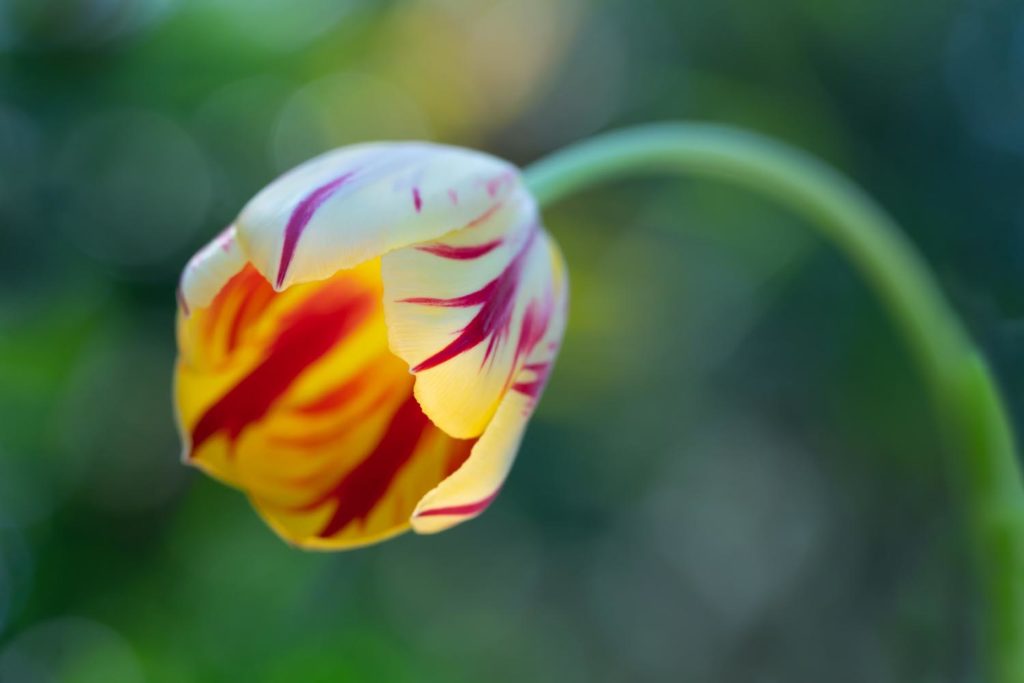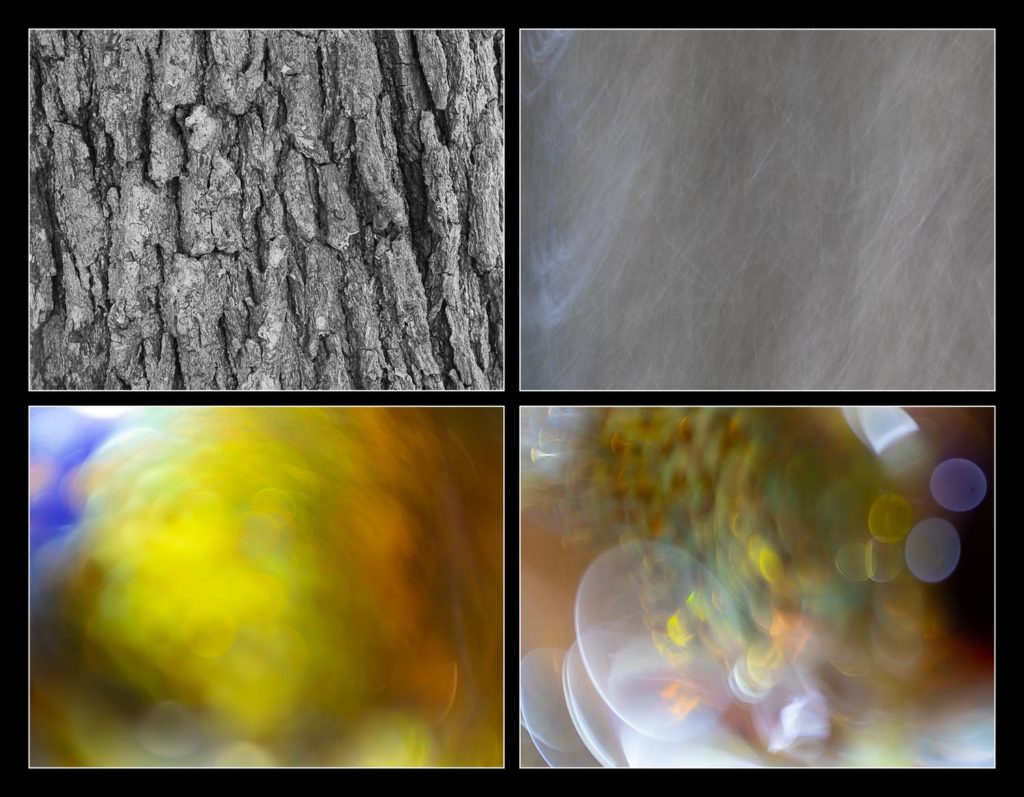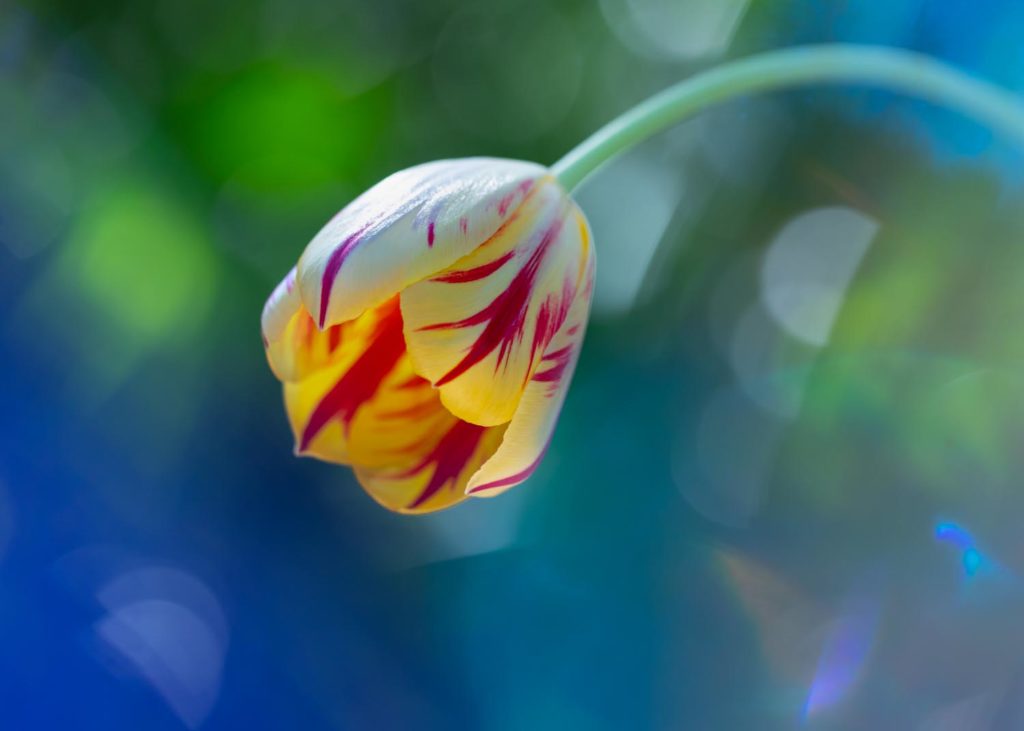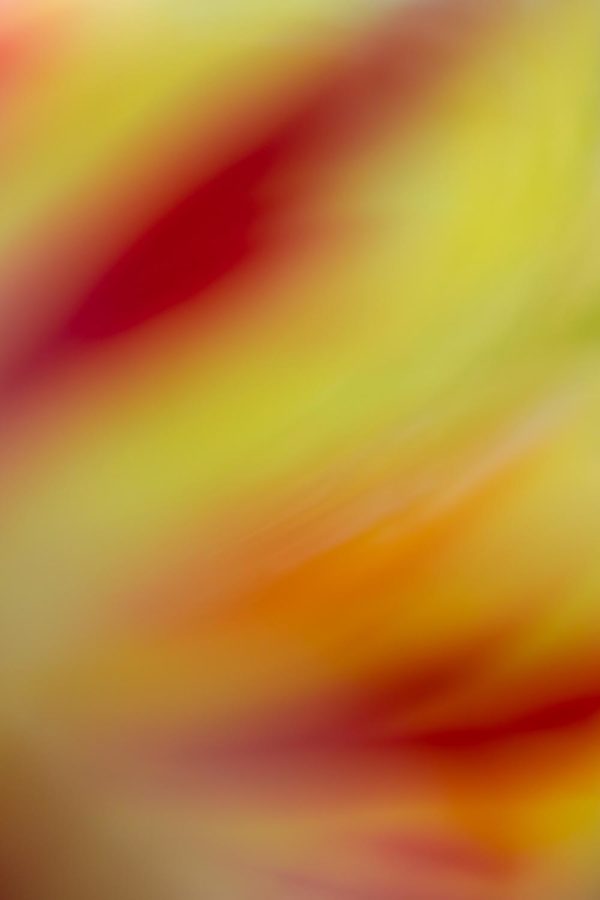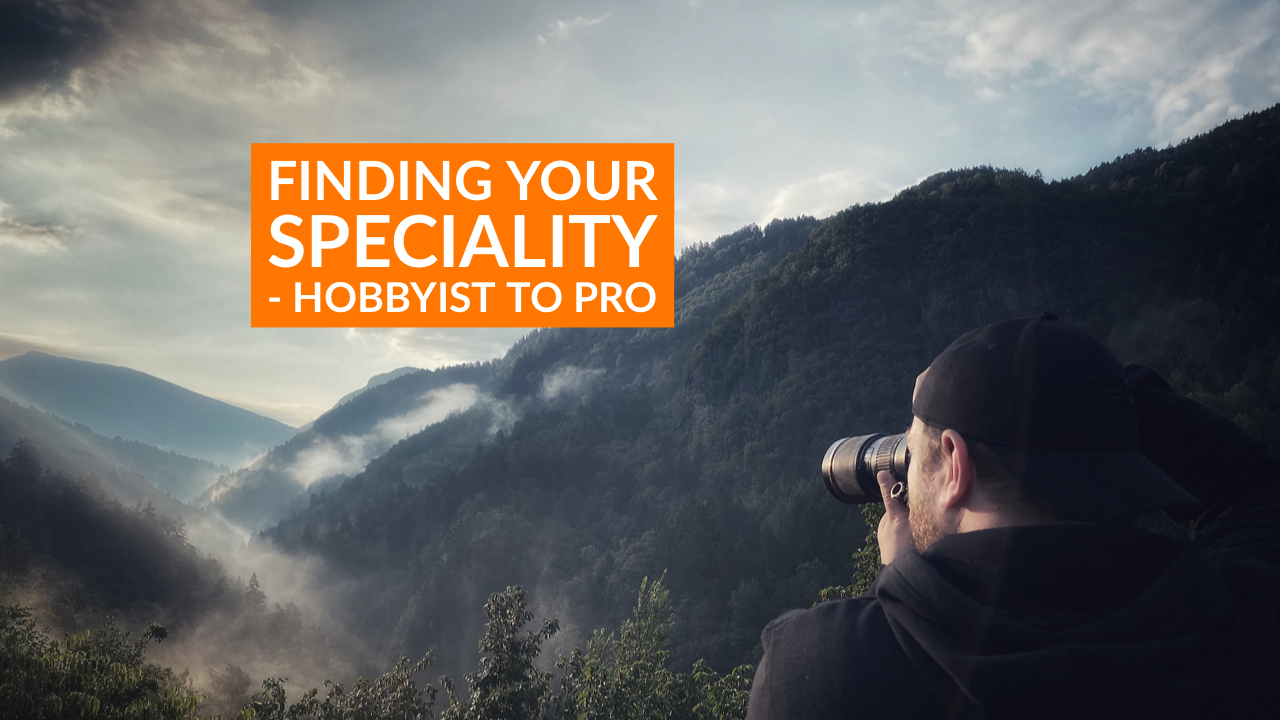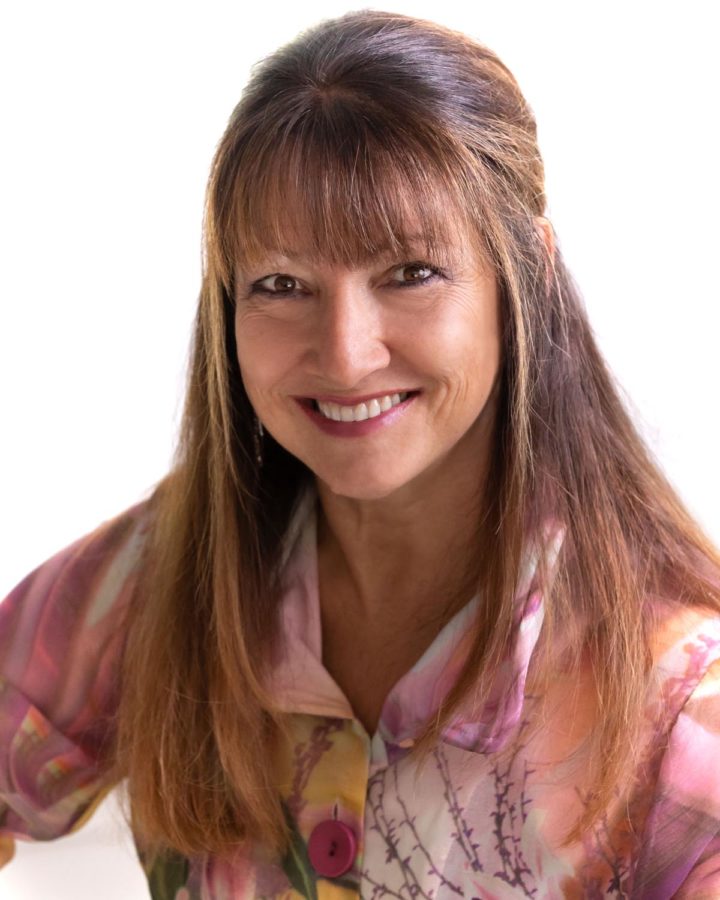
Pandemic Possibilities – Macro Adventure: Homebound with a Flower or Two
Everything as we knew it has changed. We lost spring and summer due to Covid-19, maybe most of 2020… And, for many, not just time. We’ve all experienced a whirl of contradictions in a blur that warps time, making it move fast and slow simultaneously. We’ve had a chance to focus on our work while staying as healthy as we can in mind, body, and spirit.
As photographers (business owners and enthusiasts alike), we possess a heightened awareness of the impact on our work. Weddings, events, and adventure travel have been postponed. Many photographers have reinvented, refined, or caught up on the administrative side of things. It has also been an ideal time to explore… to deepen our skills; to enrich our understanding of ourselves, to slow down, to build new pathways of connecting with others, and to learn new ways of “visioning,” shooting, processing, and sharing our photographic art.
So, is it possible to escape from reality without leaving home? I believe it is. I have completely overhauled my business of leading in-person garden workshops and have harnessed the power of the internet to reach people who were never able to travel to a workshop. Everything about my business revolves around my Facebook group, Phlorography – Artistic Floral Photography.
We have weekly themes which keep things fresh and, with everyone homebound now, I’ve been leading classes online in artistic floral photography, consisting of techniques which can be applied to a wide range of subjects. In this blog, I’m going to share some ideas that are fun and accessible to just about everyone from the comfort of your home and/or yard. Let’s head outside and enter the world of artistic macro floral photography.
CHANGE IT UP WITH A SINGLE SUBJECT
Variables: Lenses, vantage point, Lensbaby Omni filters, post-processing, high and low key imagery.
Since it’s not easy getting to any gardens now, I purchased a bunch of yellow tulips with beautiful red patterns on the petals at the local grocery store. For this exercise, I selected a single tulip and set about to achieve a variety of “looks.”
I used five different lenses (Canon 100mm macro, Canon 180mm macro, Lensbaby Sol 45 and Lensbaby Sweet 50 with macro filters and converters) on my Canon 5D MarkIV. I restricted my space to my driveway, using the natural environment as my background. In addition to the tulip and vase, I used a Manfrotto Lumie Play (3 light LED) held in place by a Wimberly Plamp II which was attached to a small stand. In lieu of a diffuser, I positioned my subject in the shade, although in doing so had to be very mindful of distracting elements and bright light in the background. All shots outdoors were handheld, however, a tripod is advisable if needed for support.
Canon 180mm Macro Lens
I’m starting with the Canon EF 180mm f/3.5L Macro USM Lens. I love this lens for the way it renders backgrounds when shot fairly wide. Be forewarned though that it is hefty and makes handholding a challenge. It also struggles when focusing in dim light or on hard to distinguish edges.
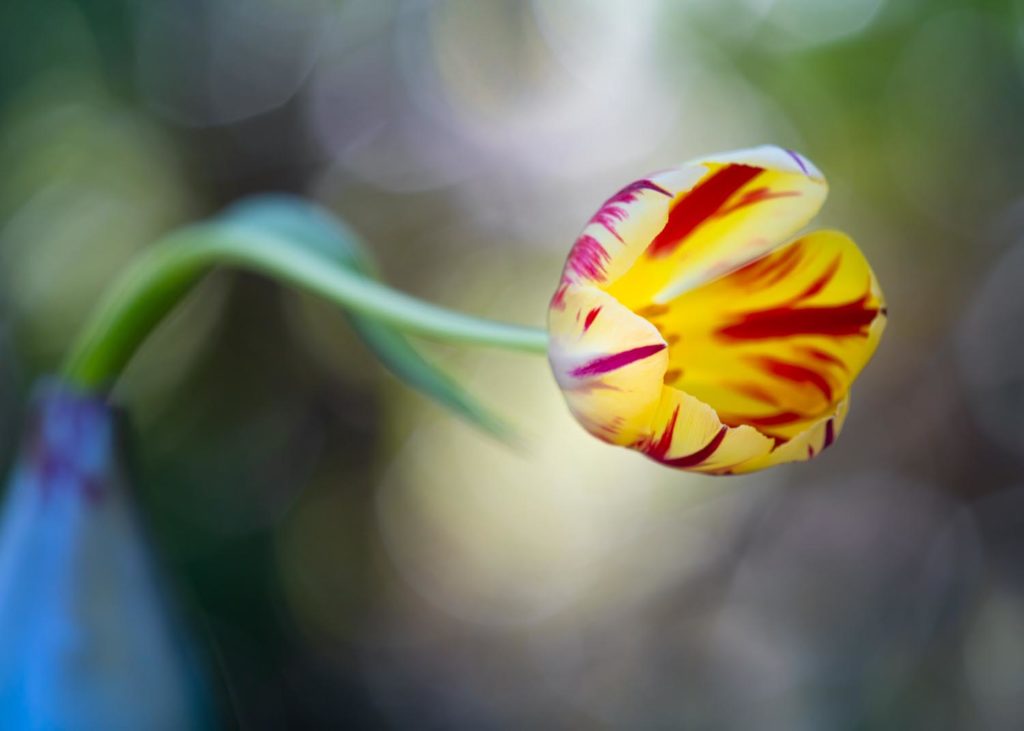
Canon 100mm Macro Lens
The most noticeable difference between the 100mm and the 180mm in this scenario, was the wider angle bringing in too much background. Since I didn’t want the driveway & other distractions visible, I compensated by moving closer to my subject. This exercise wasn’t intended to be an analytical side by side comparison of the optics; just to produce a myriad of looks and styles.
Since the image shot with my Canon EF 100mm f/2.8L Macro IS USM Lens was nice, but needed pizazz, I chose to add some textures (shot inside and around my yard) in Photoshop.
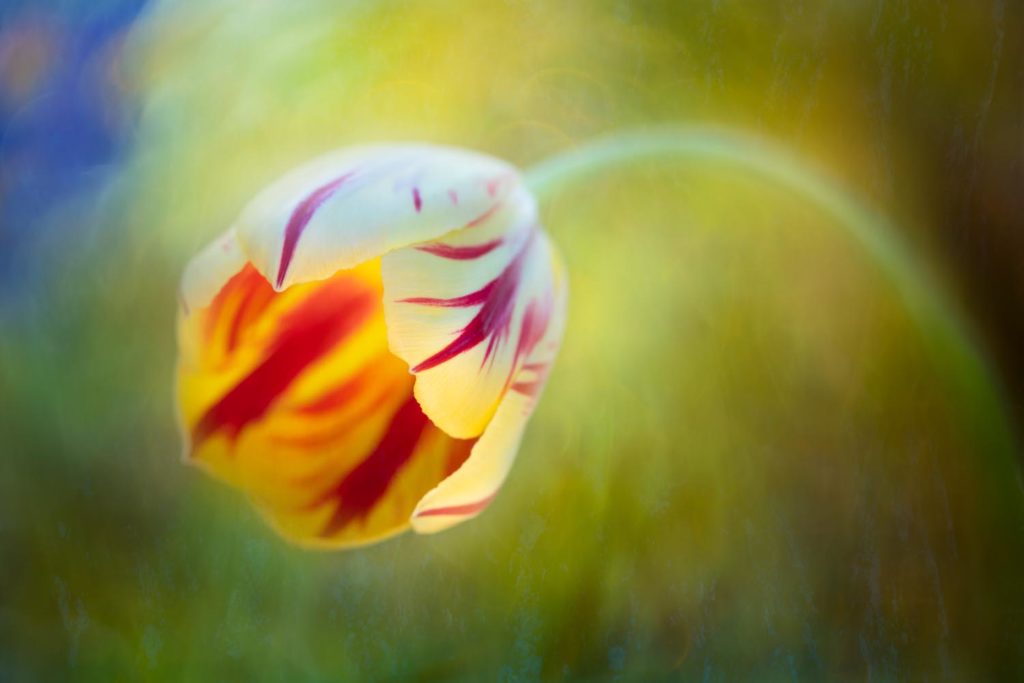
Lensbaby – Sol 45 (with +1 and +2 close up filters)
Now for some thrills & unscripted excitement – enter Lensbaby. It is like going to a friend’s home for dinner when you have no idea what‘s on the menu. You have faith that it’s going to be stellar, because you know they’re a gourmet cook and have tasted their dishes.
The following image was made with my Lensbaby Sol 45. This lightweight optic is 45mm with a fixed aperture (f/3.5), and shifts the sweet spot of focus as it tilts to 8.5 degrees. For this image, I got very low and shot up toward the sky. The Sol 45 warped the trees into dark wavy lines against a bland sky so I added an abstract layer (multiplied several times in Photoshop) to fill in the empty spaces and jazz it up. This image reminds me of the famous 1893 painting, The Scream, by Edvard Munch. Clearly, this is a departure from my workhorse macro lenses. I find it fascinating how the colors render so differently with each lens.
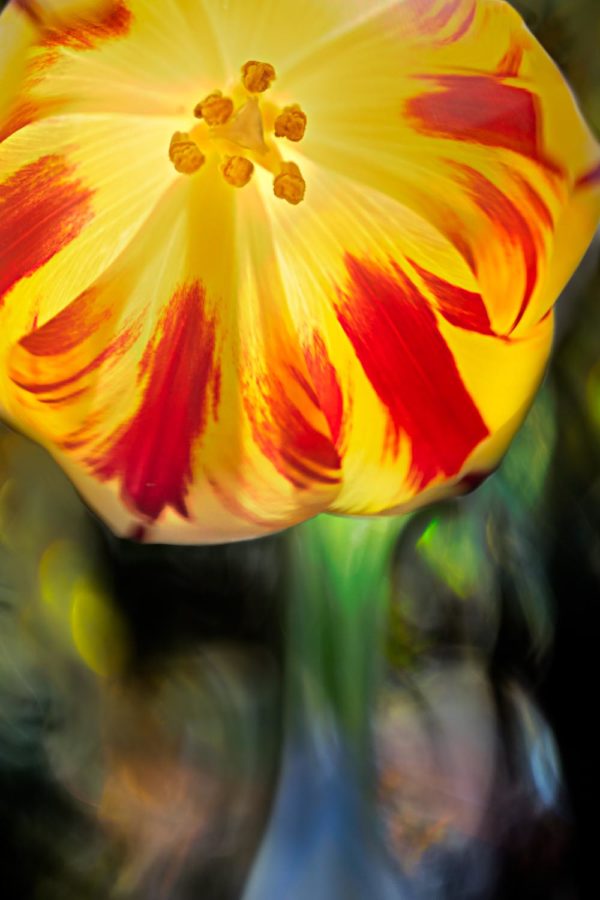
The Lensbaby Sol 45 can be tame or wild. In the following image, notice the jagged lines interrupting the bokeh. This occurs when the bokeh blades in the optic are engaged or pushed into view (see the photos showing the blades in and out; they also rotate).
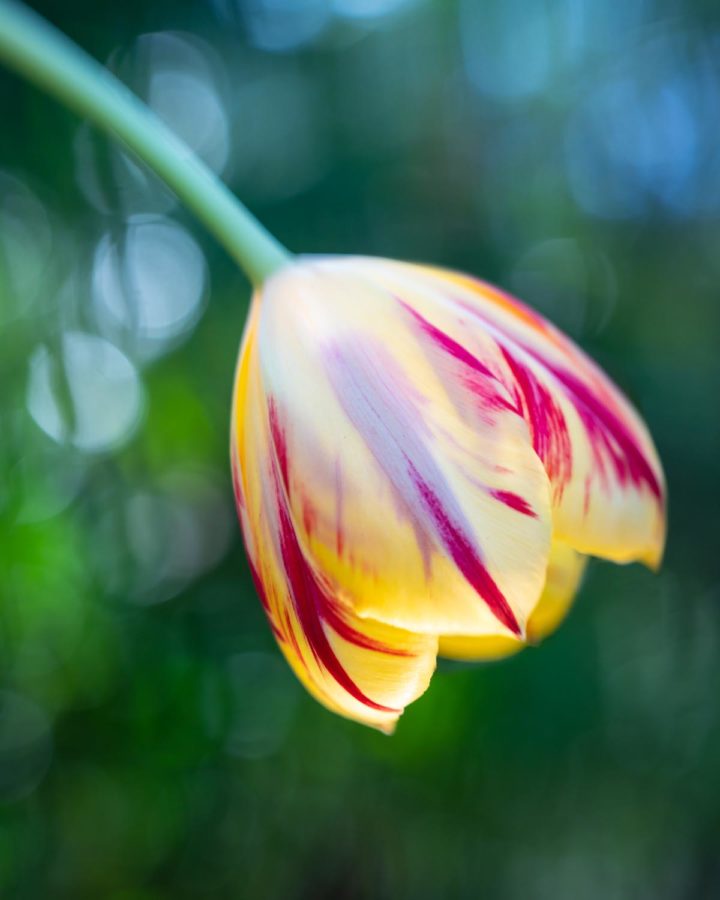
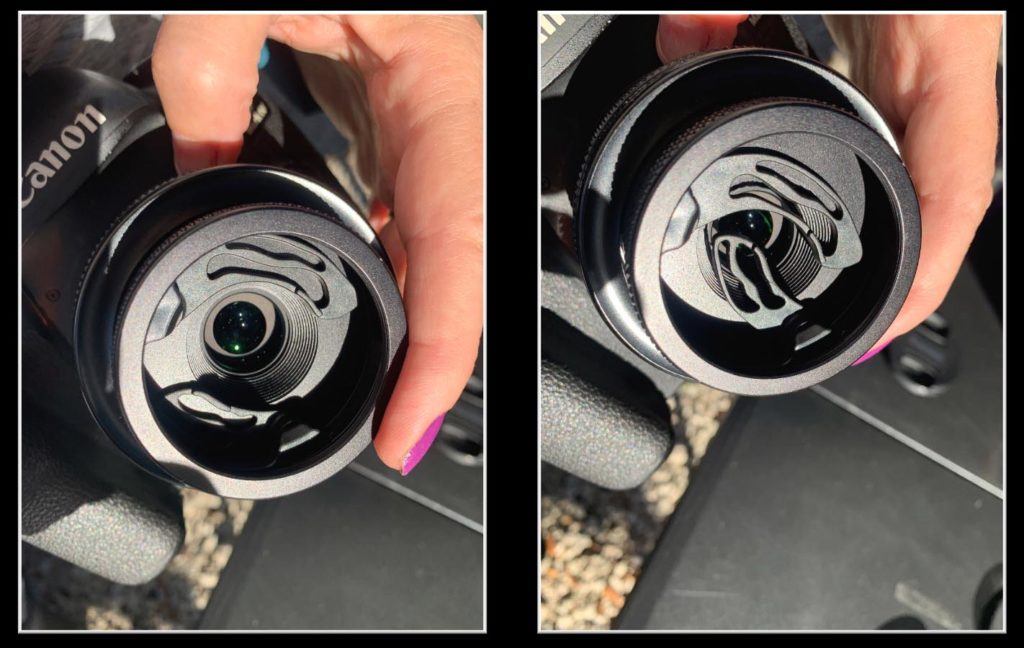
Lensbaby – Sweet 50 (with 8mm macro converter)
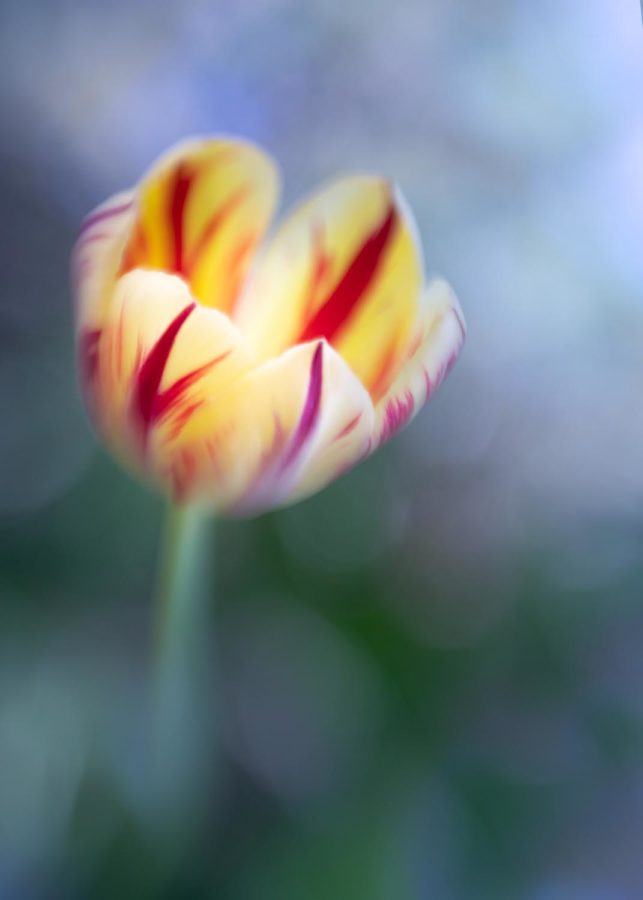
Lagniappe…
And when you still want more variety…. Try multiples in-camera, adding Lensbaby Omni Filters (paired here with my Canon 100mm macro) for unique light and color effects, and abstracts.
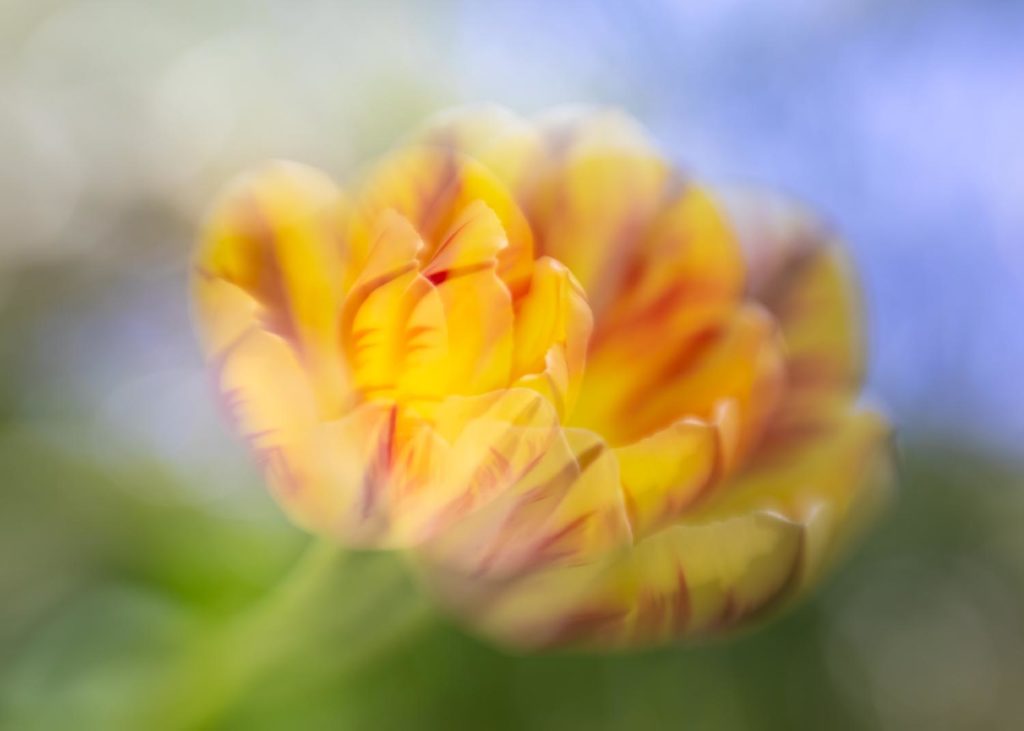
The set up for all of the above consisted of a stand, the Wimberly Plamp II, and a Manrotto Lumie Muse Play 3.
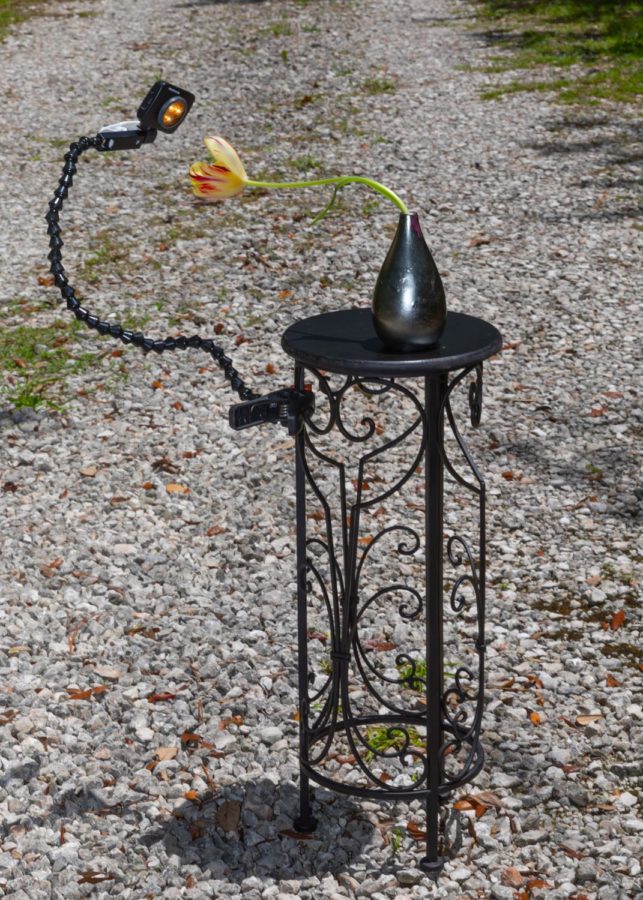
You can do low key shots outside by simply underexposing and adding light to your subject. Of course, the darker the background to start with, the better.
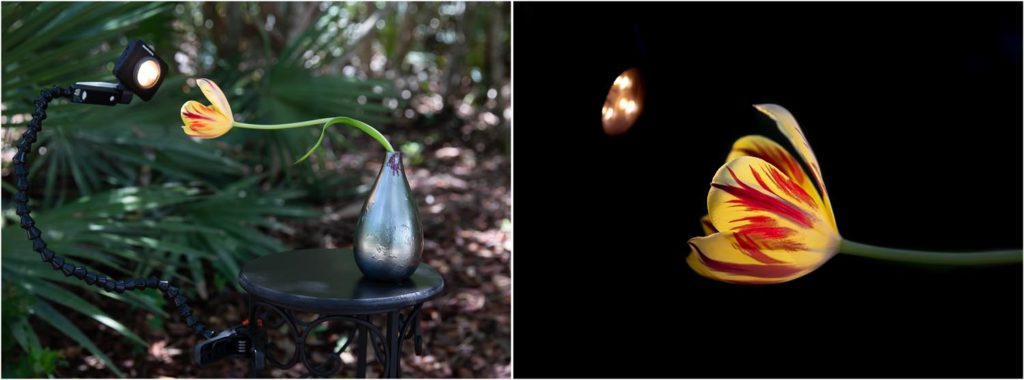
If you’re ready to head back indoors and cool off, get a glass of water and shoot some more formal high key and low key images. Set up a lightpad for the high key and a black science fair board or black velvet for the low key. I used my Lensbaby Velvet 56 for both because it was an optimal focal length to frame the tulips from my tripod. The shots were made at f/16, though if I continued the exercise, I would also do some with the aperture set between f/2 and f/4 to take advantage of the characteristic glow of the Velvet.
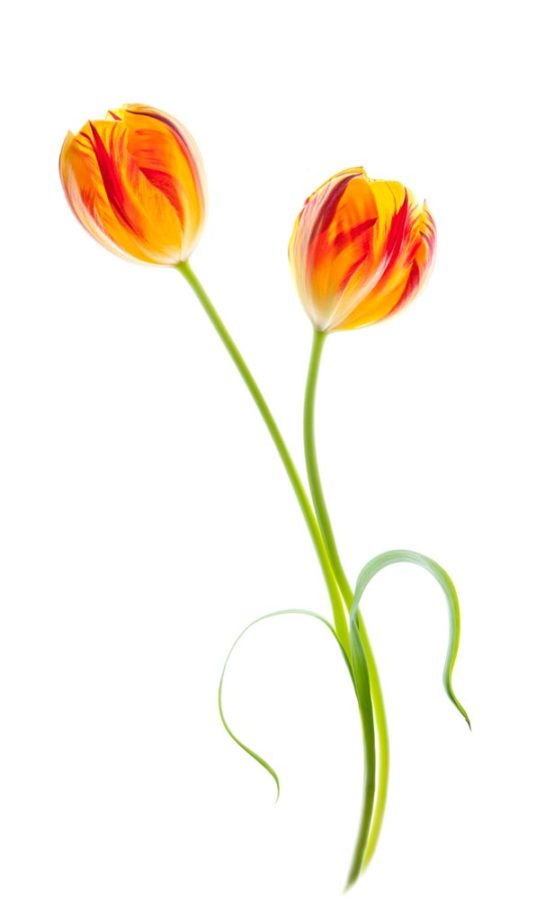
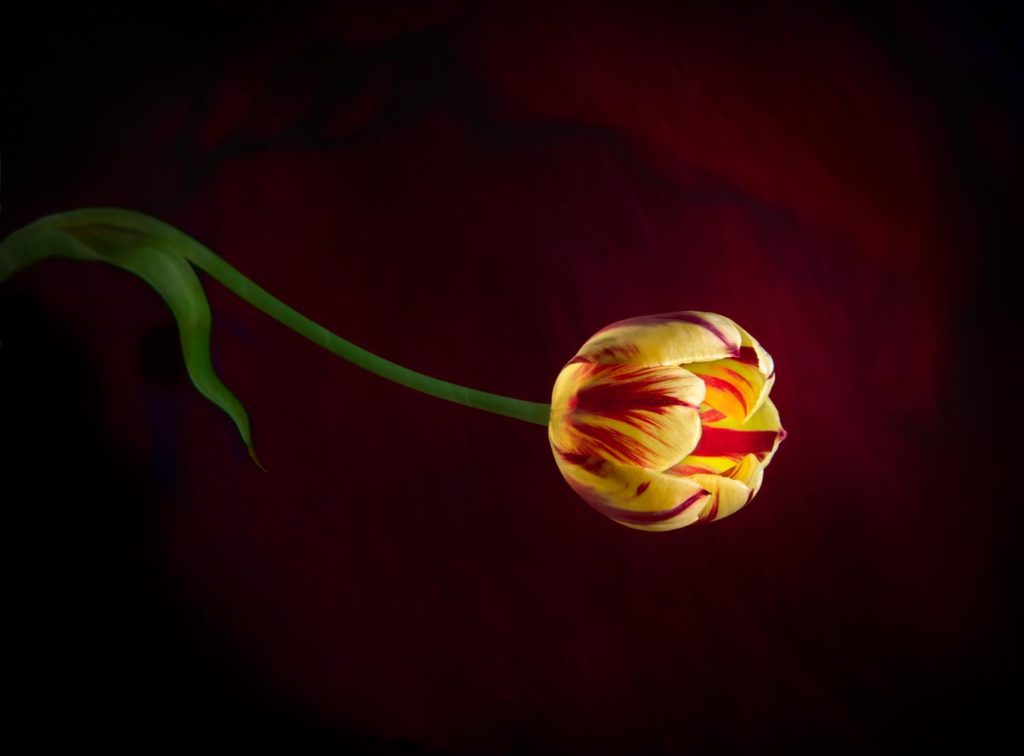
Bottom Line:
Have fun! Go on a little adventure and explore the world beneath your feet for hidden gems. When you find one or more, dig into your gear and lighting and see how many different images you can create. Whether it’s the shooting or post-processing; making abstract, utilitarian, or documentary images, a single photography or a project…follow your own path. Experiment and be open to surprise. Intersperse the practice of photography by tapping into the knowledge base in KelbyOne; join classes & online workshops in genres new to you or in areas that will enhance your photography, your business, or simply feed your creative soul.
About Me:
It’s an honor to be invited to share this space with Scott and the many other professional photographers whom I admire. I began my Lightroom journey at Photoshop World in 2011 and continued to learn from Scott and others through his books, magazines, and online instruction (Lightroom & Photoshop User magazines, and tutorials on KelbyOne).
After working as an environmental engineer for over 30 years, most of which was spent in Alaska, I moved back to my home state of Florida and transitioned to a full-time career of photography which I had been pursuing as an enthusiast since high school. My primary area of interest is in flowers, but my true calling is in working with people in my community, Pholorography, built on a platform of enriching each other through the medium of photography, which is the tie that binds.
You can view more of Jackie’s work at LuvBlooms.com, check out her Phlorography Facebook community, and view her online courses at KelbyOne and JackieKramerOnline.com.
You can also pick up a LensBaby for 10% off with discount code: wkramer10



